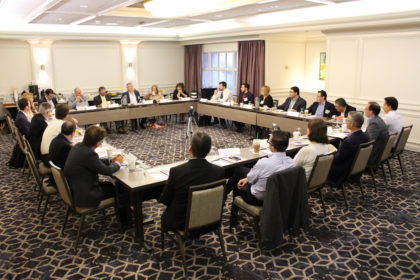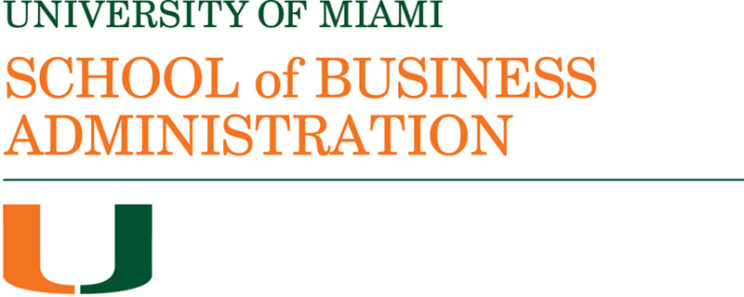Technology rapidly shortening, altering necessary work skills
Evolving skill requirements are rapidly reshaping the labor market and business behaviors. That was the latest pertinent topic for the latest WorldCity CEO Club to tackle. Learnability. The lifecycle of skills. Sparking results from millennials. Staying ahead of the obsolete curve.
“There are dramatic forces happening with great rapidity impacting the whole global market,” said discussion leader Tom Shea, president of Right Management for the Florida/Caribbean region.
With that in mind, here were some of the points that resonated on Surviving the Skills Revolution.
The lifecycle of skills is shorter than ever.
The abacus lasted 2,100 years until the slide rule took over for 345 years. Fast forward to cellular phones and now smartphones, and the speed of upgrades is now measured in months, not years. Samsung went to market with a virtual reality headset for your smartphone that initially cost hundreds of dollars, but here comes Google with a popular version made of cardboard for $15.
“How are traditional large companies moving in that direction?” asked Ricardo Villate, group vice president for Latin America at IDC.
Tom Shea answered with another question, noting if it’s going to take a year to open a plant or launch a service, there better still be a need when it launches.
“What products do we want to bring to the marketplace that we feel are going be sustainable?” said Shea.
Skills are the new currency.
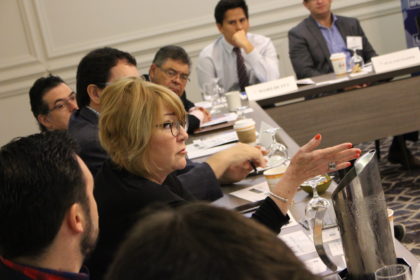
Lourdes F. Peters shares how her company, World of America Global Partners, is bridging a generational gap in her workforce.
Shea’s presentation noted employers need to nurture learnability (a term trademarked by Right Management’s parent company Manpower Group), and individuals need to nurture their learnability. Right Management defines learnability as the desire and ability to grow and adapt to new circumstances and challenges throughout your work life.
“It’s not just about money today,” said Shea about the millennial workforce’s views.
“I started an experiment three years ago,” said Lourdes F. Peters, president and CEO at World of America Global Partners, who started hiring both 50-60-year-olds and college students part-time. They worked together on internal resource projects and learned from each other’s skill sets.
The majority of jobs millennials will work don’t exist yet.

Discussion leader Tom Shea humorously pulls out his old slide rule to illustrate the point about how products and technology are becoming obsolete more rapidly today.
Shea and Right Management estimate 65 percent of the jobs generation Z will perform do not yet exist. So those who illustrate superior learnability will not just survive the skills revolution but thrive.
Assigning tasks to millennials may require a different approach
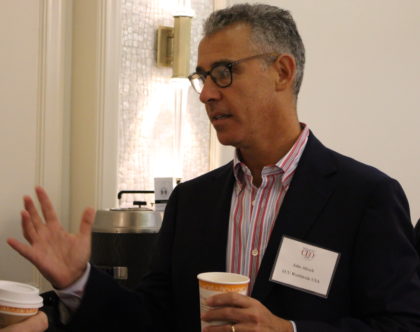
John Abisch of ECU Worldwide USA chats with a fellow CEO.
How do you get the most out of millennials and make them as productive as possible in the workforce?
“One of the things we’ve had a little bit of success with…instead of giving them very clear direction on exactly what you want them to do with this project, present it as, ‘Here’s what I’m hoping to accomplish. This is the project. Here’s the ultimate goal. You go put together the plan’,” said John Abisch, regional CEO at ECU Worldwide USA.
Find out what your learnability is.
You can actually go on-line and take a short test to see what type of learner you are. The test measures your “learnability quotient” and takes less than 10 minutes. It’s available at www.learnabilityquotient.com.
Companies should capitalize both on what they do well and eventually won’t do well.
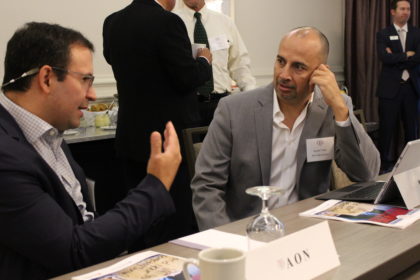
Alejandro Marmorek from Aon Risk Solutions, left, and Ricardo Villate from IDC Latin America, right, chat before the CEO Club.
If part of a large company has a division that is doing well now but may at least partially decline due to market shifts, it makes sense to explore options now.
“At Aon, we just divested our outplacement or outsourcing division. We sold it to Blackstone for $5 billion,” said Alejandro Marmorek, chief commercial officer for Latin America at Aon Risk Solutions. “We couldn’t keep up with what is coming in the future, and that was the decision we made.”
“Big companies are making big decisions as to what their core element is that they are going to invest in,” said Shea. “Those are the decisions…that are coming with much more rapidity.”
Final Thought
“Helping people upskill and adapt to this fast-changing world of work will be the defining labor challenge of our time.” – Tom Shea and Right Management
Thanks to our sponsors:
The next CEO Club will take place July 14th.
On June 9th, World City’s Trade Connections series continues with the launch of PortMiami and U.S. TradeNumbers.
On June 23rd, World City’s Global Connections series continues with Social Media: The New Power of Video.
